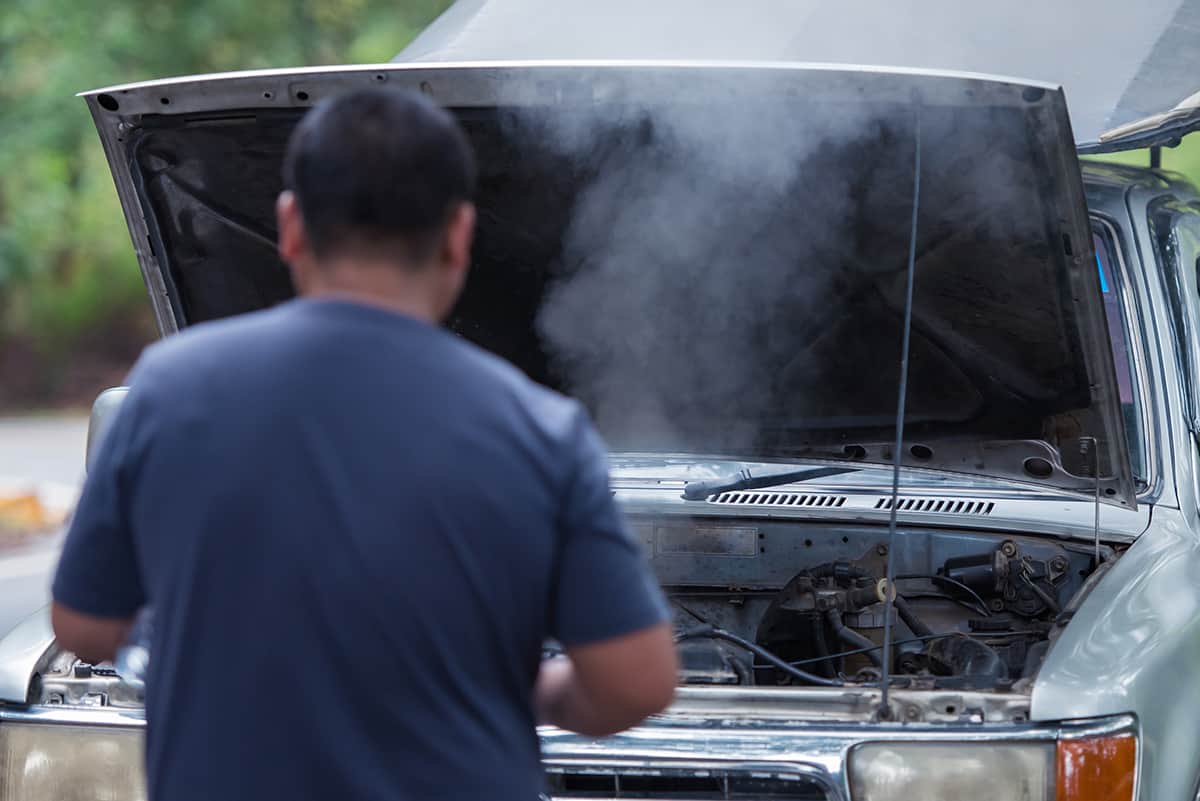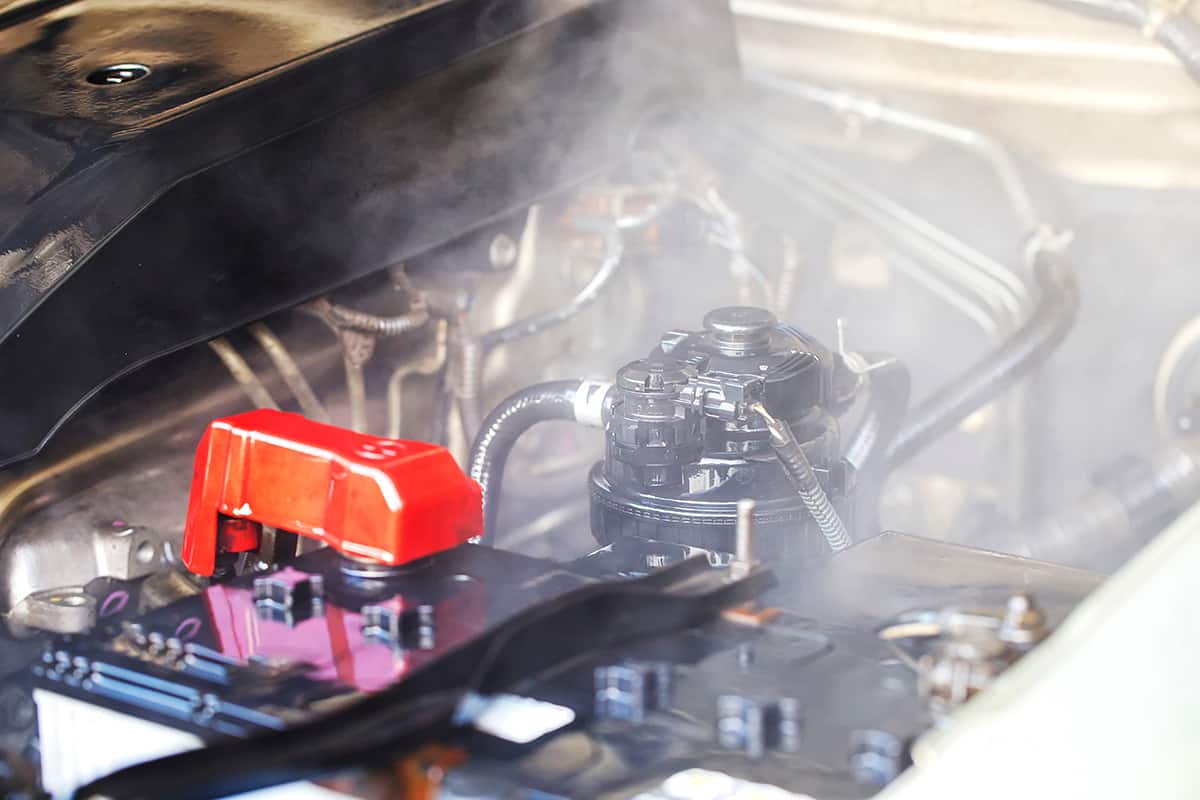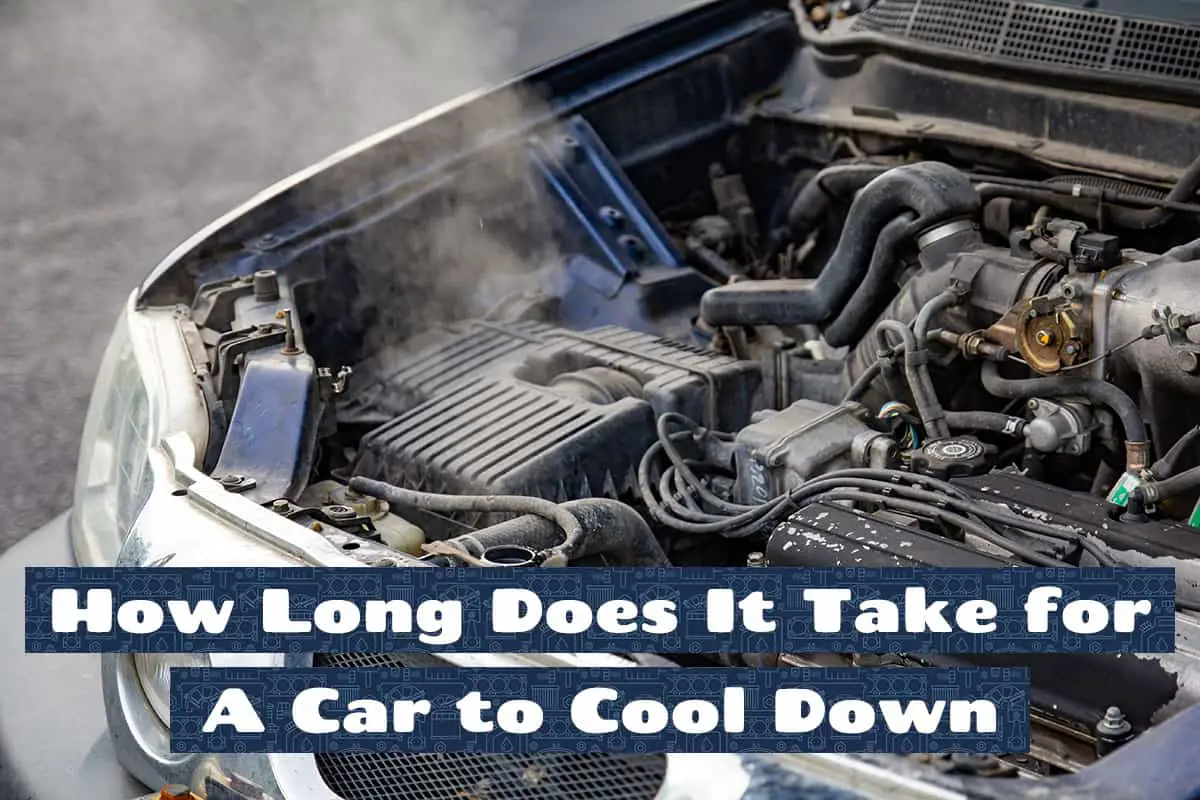Cars heat up—it’s part of how they work. However, if you plan on working under the hood after driving for a couple of miles, it’s usually a good idea to let it cool down. So, how long does that take?
On average, it should take about half an hour for a car to come down to a safe temperature for inspection. The exact duration it takes for a car to cool down is influenced by several factors, such as:
- Ambient temperature
- Car color
- Car size and type
- Parking conditions
In this article, we will take a look at the reasons why cars heat up, factors that impact their cooling down process, the mechanisms involved in car cooling systems, and tips to accelerate this process.
Why Do Cars Heat Up?

The temperature of a car plays a role in how well it functions. Too much heat can lead to several issues, from minor discomfort to significant mechanical problems.
The engine is the heart that generates heat as a result of burning fuel. Combustion engines convert chemical energy (fuel) into mechanical energy (movement) with an efficiency rate of approximately 30%. The remaining 70% is emitted as heat. Some of this heat is expelled through the exhaust system, while the rest heats up the engine itself, raising the vehicle’s temperature.
Most car engines operate optimally between 190 and 225°F. However, this is variable and subject to a wide range of factors. Most cars come equipped with a temperature gauge or a warning light on the dashboard that informs the driver about the engine’s temperature. Traditionally, the gauge features a C (for Cold) and H (for Hot) at extreme ends of the scale. Normal engine temperature is usually at the midpoint.
Factors That Affect How Long a Car Takes to Cool Down
After you’ve turned off your vehicle, it begins to cool down. However, how fast it returns to cool-to-the-touch temperature depends on numerous factors. Let’s learn about what those factors are.
1. Ambient Temperature
Simply put, your vehicle will take longer to cool in a hot environment and quicker in a colder one. For example, a car parked in direct sunlight on a scorching summer day will take considerably longer to cool down than the same car parked on a cool, shaded winter day.
The ambient temperature isn’t just about the weather outside; it’s also about the immediate surroundings of your car. If you’re parked on asphalt or concrete, which tends to absorb and radiate heat, it could delay the car’s cool-down process.
2. Car Color
Car color directly impacts how quickly your car can cool down after a drive. Darker cars tend to absorb more heat, which means they also take longer to cool down. Conversely, lighter-colored cars reflect more sunlight and heat, allowing them to cool down more quickly.
So, while that black sports car might look sleek and stylish, it’s going to stay warmer for longer than its white counterpart.
3. Car Size and Type
Larger cars and trucks have bigger engines that produce more heat. Consequently, these vehicles will take longer to cool down. Smaller vehicles with smaller engines generate less heat and cool down more quickly.
The vehicle’s design also matters. Compact cars with cramped engine compartments can trap heat, slowing the cooling process. In contrast, cars with larger, more open engine bays allow for better airflow, facilitating quicker cooling.
4. Parking Conditions
If a vehicle is parked in direct sunlight, the car’s interior, engine, and bodywork can become significantly heated, extending the cool-down period. On the other hand, cars parked in shaded or indoor environments are not exposed to direct sunlight, and they cool down faster.
The Car’s Cool Down Mechanism

All cars come with built-in cooling systems to prevent heat damage. Let’s explore the cooldown mechanism in more detail.
Radiator and Coolant
At the heart of the cooling system is the radiator, a device designed to cool the engine by dissipating heat from the coolant, a heat-absorbing fluid.
When the engine is in operation, the coolant circulates, absorbing the engine’s heat. This heated coolant then travels to the radiator where it’s cooled down by the incoming air, typically aided by a fan when the car is not in motion. Once cooled, the coolant recirculates through the engine, repeating the process.
How the Thermostat Regulates Engine Temperature
The thermostat is a temperature-sensitive device that regulates the coolant flow between the engine and the radiator. When the engine is cold, the thermostat remains closed, allowing it to warm up quickly and reach its optimal operating temperature. The thermostat opens once this temperature is achieved, allowing the coolant to circulate and keep the engine from overheating.
The Heat Dissipation Process
Most of the heat generated by the engine is expelled through the exhaust system, while the rest is managed by the cooling system. However, the heat also spreads to other parts of the car, including the bodywork and the interior, mainly through conduction and radiation.
When the car is turned off, this heat gradually dissipates into the surroundings, cooling the car. The rate of this dissipation depends on the factors already discussed above.
Engine Oil
While the radiator and coolant are the primary cooling agents, engine oil contributes to managing a car’s temperature. Besides lubricating engine parts to reduce friction (which generates heat), the oil absorbs some of the engine’s heat.
How Long It Takes for Different Car Parts to Cool Down
Cars are complex machines with various parts that heat up and cool down at different rates. The cooling time for each component varies based on its function, material, and exposure to airflow.
Engine
Made primarily of metal, the engine retains heat longer than other car parts. On average, an engine can take anywhere from 30 minutes to a few hours to cool down to ambient temperature after being run for a significant period. Opening the hood can speed up this process by allowing more airflow over the engine.
Exhaust System
Your car’s exhaust system deals with some of the highest temperatures in the vehicle, especially in parts like the catalytic converter and the exhaust manifold. It can take several hours for these components to cool down completely.
Radiator and Coolant
Despite dealing with hot coolant, the radiator itself cools down relatively quickly due to its design that facilitates heat exchange. Usually, the radiator and coolant cool down to a safe level within 30 minutes of turning off the car.
Car Interior
The interior of a car, especially when left in direct sunlight, can become surprisingly hot. The interior can take over an hour to cool down to a comfortable level on a hot day, even with the windows open. However, using air conditioning or a sunshade can expedite this process.
Car Body and Tires
Despite being directly exposed to the sun and ambient air, the body of a car cools down relatively quickly once the vehicle is turned off. However, darker-colored cars can stay warm longer due to heat absorption.
Tires also heat up while driving due to friction with the road. Their cool-down time depends on the driving conditions and ambient temperature, but typically, they cool down to the touch within an hour.
Risks Associated with Overheating Cars
Not only can overheating damage your vehicle’s components, but it can also compromise your safety.
- Engine Damage: The extreme heat can warp engine parts, lead to head gasket failure or even seize the engine, requiring costly repairs.
- Overheated Transmission: This could lead to transmission fluid degradation and, in severe cases, complete transmission failure.
- Safety Risks: An overheated car could break down unexpectedly, putting you at risk on the road. In extreme cases, overheating can lead to engine fires.






